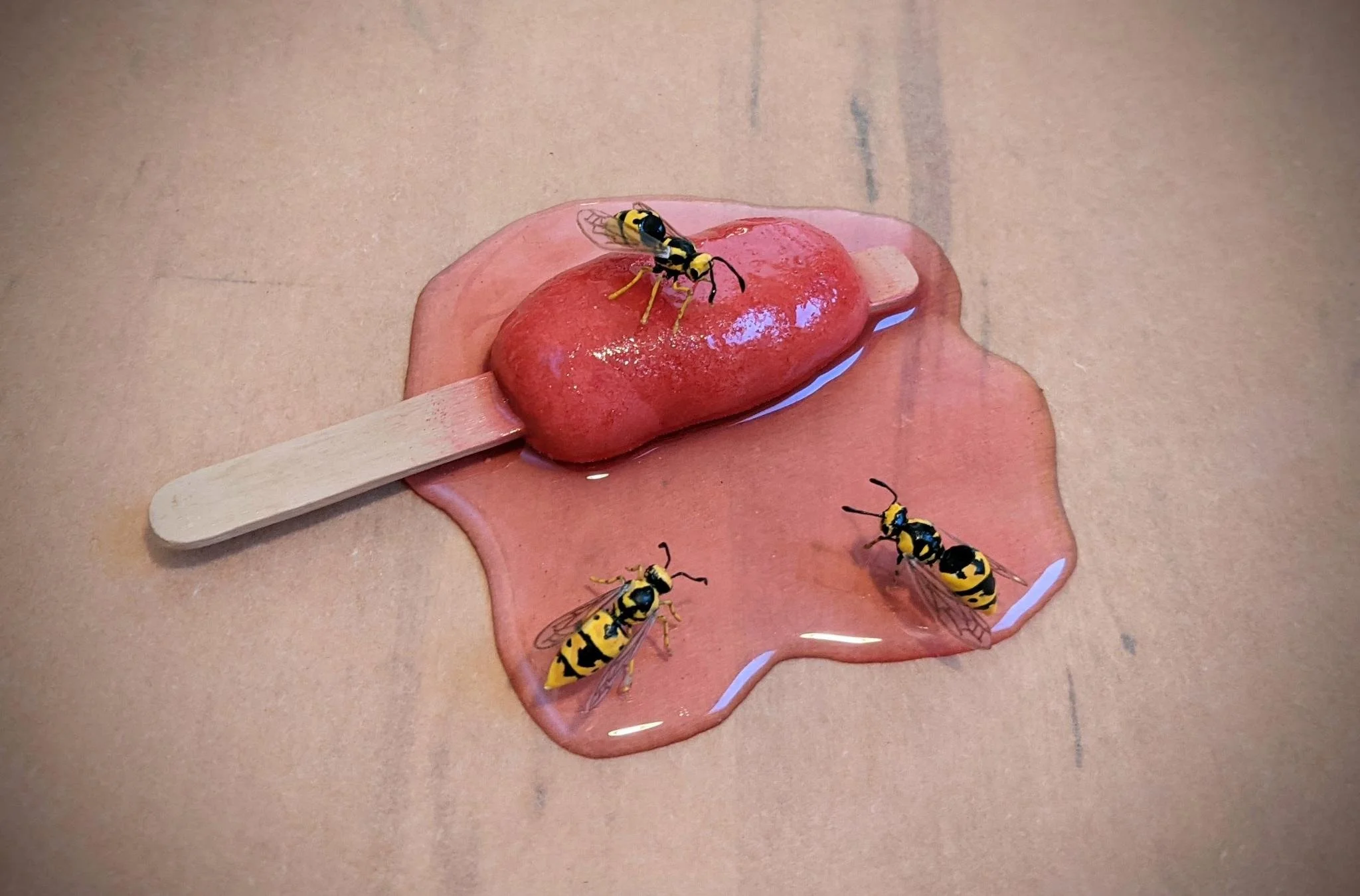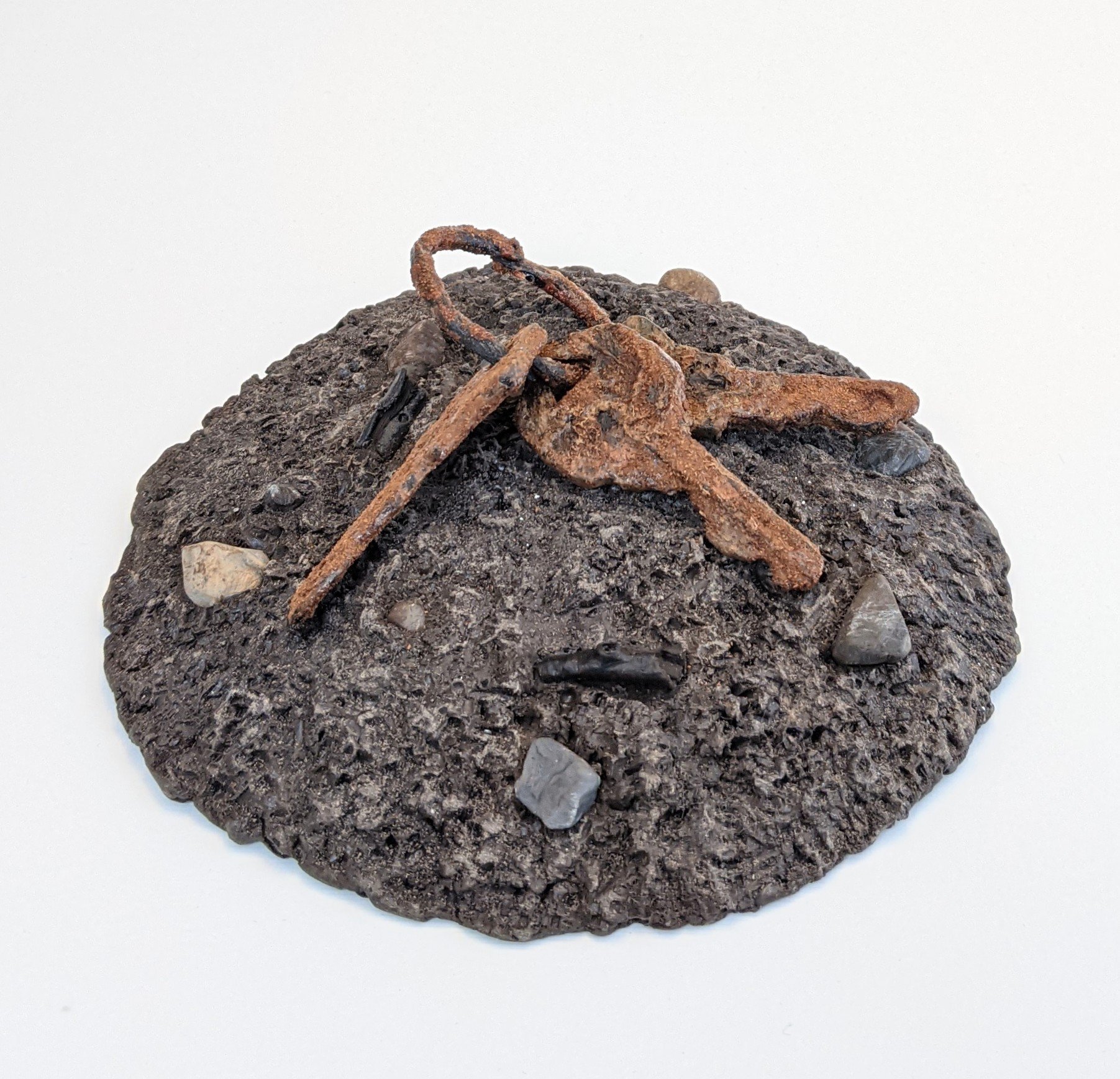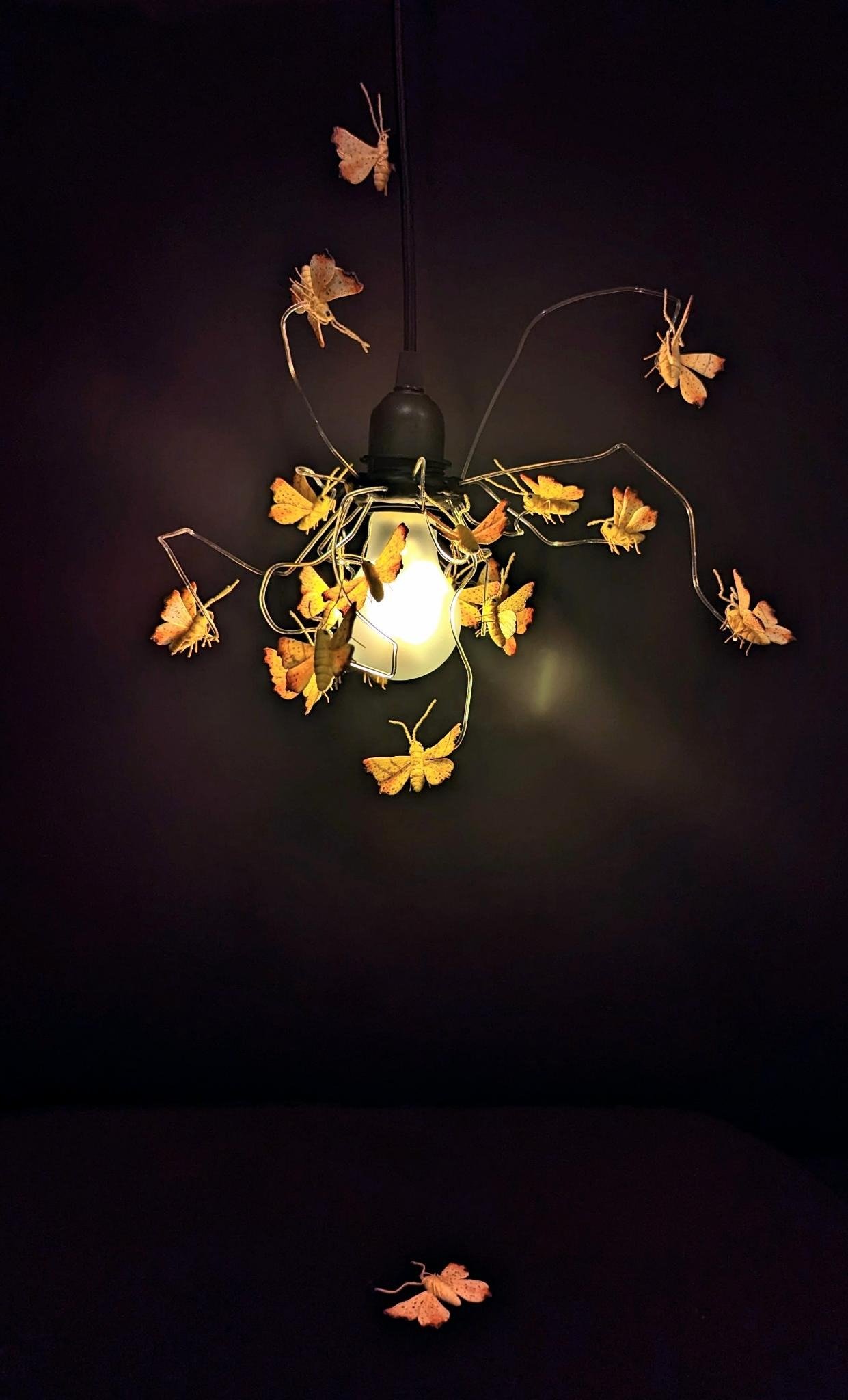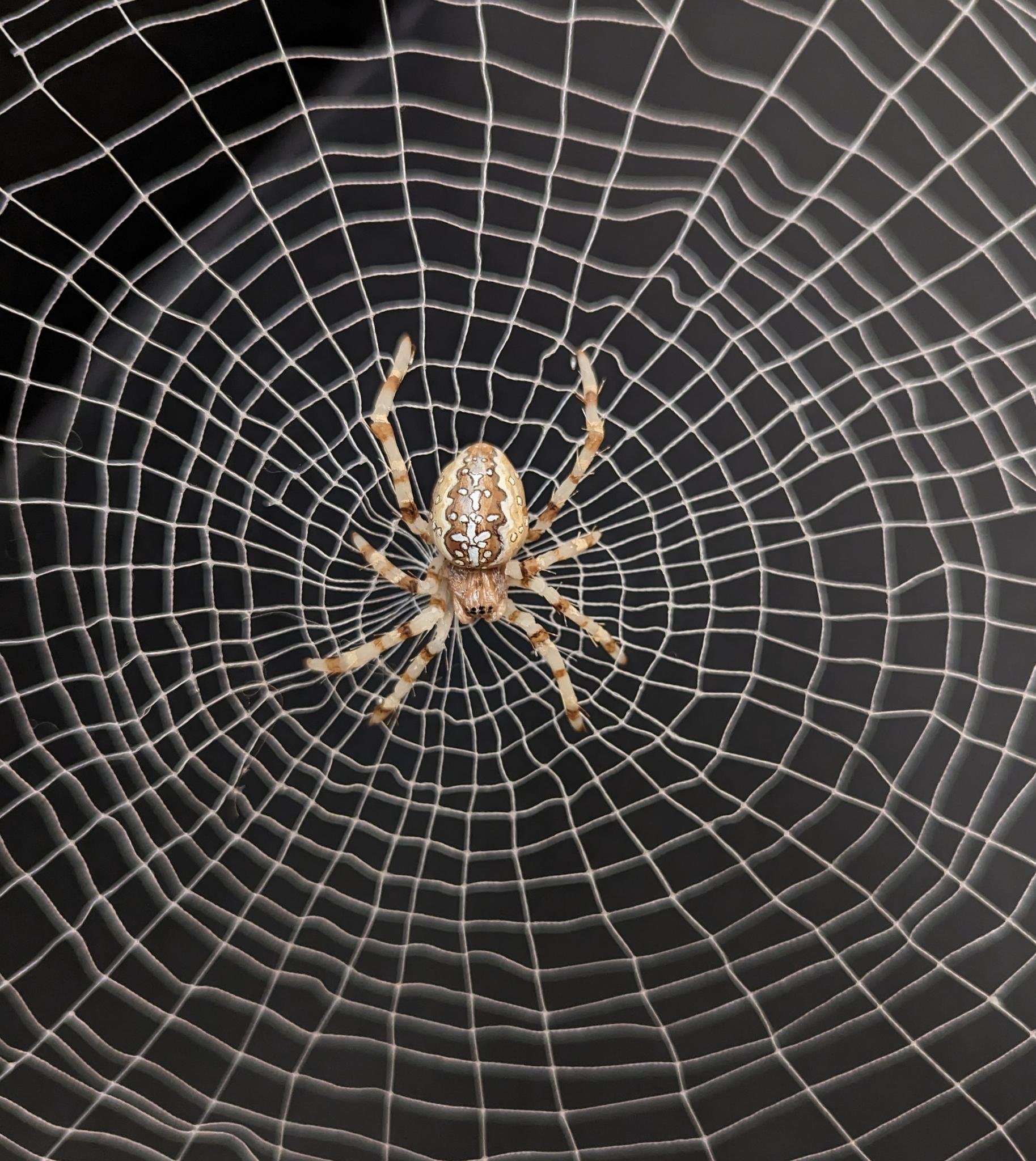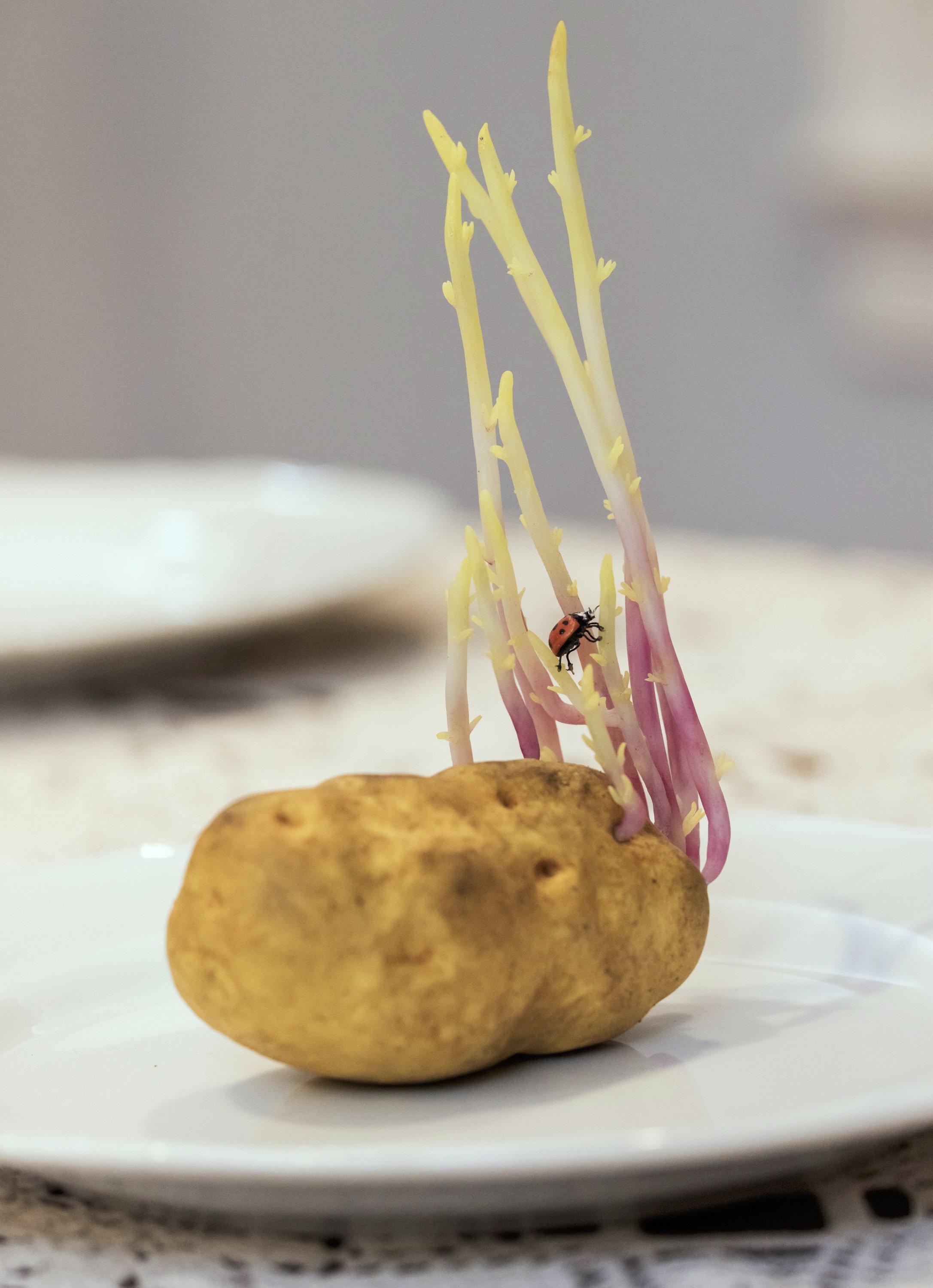
(de)composed/I Cannot Be a Meal, But I Can Be a Garden
Exhibition Proposal
Artist statement
As a disabled woman, I'm drawn to things that are cast off or othered, to beauty that's ignored or needs unearthing. My work invites people to push past their discomfort and look closer.
"(de)composed/Nocturne" (2020-2023) explores how often when something has "gone bad" it's produced something new, but It can be hard to appreciate new growth in the shadow of our disappointment. I like spending hours meticulously crafting something usually thought of as ruined. The works in this series are made with a self-imposed rule that every element must be created: every rock, popsicle stick, and bean sprout is painstakingly sculpted and detailed by hand. This mandate pushed me to learn new ways of looking at familiar objects, and helped me notice small and often overlooked beauty in the world around me. I hope this work can help encourage others to take a moment to observe, reexamine, and perhaps find some hidden beauty for themselves.
I spent 2024 expanding on the final (de)composed work: a self portrait of my experience of disability in the form of a sprouted potato. This became “I Cannot Be a Meal, But I Can Be a Garden.” Growing up, I had clear ideas about how success was measured. Realizing that my health meant I would never meet those standards made me feel useless. It took a long time to accept that I still have value, from my love to the art I put into the world.
If you want to make hash browns, a sprouted potato is ruined. You have to completely shift your outlook to what it can be now - a houseplant, a source of more potatoes - for it to again have value.
That's the process I've gone through with my life as a disabled person. Sometimes I still mourn the hash brown I thought I'd be, but I've come a long way to seeing the value in my houseplant self. I cannot be a meal, but I can be a garden.
Description of Exhibition
As “(de)composed/Nocturne” led into the creation of ICBaMBICBaG, visitors to this exhibit will take the same path through the art.
The pieces in “Nocturne” particularly utilize the interplay of dark and light, including fluorescence, luminescence, and retroreflectiveness. They are intended to be presented in a black-painted gallery space. Limited ambient lighting serves as a backdrop, with each piece individually illuminated. Visitors will be given access to white light and UV flashlights to allow them to explore the details revealed under different lighting conditions. “Nocturne” is composed of 4 works on pedestals and 2 suspended pieces.
“(de)composed” explores the life and beauty in things often regarded as ruined. This portion of the exhibit includes 13 pieces displayed on pedestals, 1 self-supporting piece, and 5 installation works integrated into the gallery space.
“I Cannot Be a Meal, But I Can Be a Garden” is an installation that grew from the final work in (de)composed. It centers on the form of an 8-foot-long dining table, which evolves from traditional place settings to soil, roots, flora and fauna. At one end sits a sprouted potato on a clean white porcelain plate surrounded by delicate crocheted lace: in this context, it is spoiled and useless. As the place settings progress, they begin to disintegrate: the tablecloth frays and knots into roots; the surface of the table roughens until it becomes soil; the plates break down until they become stones. A potato plant grows through the far end, with underground tubers below and the flowering leafy plant above. There are insects, isopods, mammals, amphibians, fungus - a whole ecosystem of life.
The underside of the table offers more glimpses into the workings of this patch of garden, with populated underground anthill chambers, earthworms, mycelium, and more. A mirror will be used to make viewing this portion accessible.
The installation includes an a component: two overlapping zones of ambient sound transition from the subtle clink of silverware on plates and glasses raised and lowered to bird calls, the buzz of insects, and a breeze rustling leaves. (An audio mock-up can be found here: https://www.jgklausner.com/i-cannot-be-a-meal-but-i-can-be-a-garden-audio)
Equipment/Materials Requirements
For Nocturne
Black painted walls
5 black pedestals
A ceiling suspension system or a ceiling that can have eye bolts installed (all suspended pieces weigh under 1lb)
Small UV flashlights
Small white light flashlights
For (de)composed
10 white pedestals
Spotlights
Walls that can be painted on
For “I Cannot Be a Meal, But I Can Be a Garden”
4 speakers
Spotlights
Non-track-based spotlights for illuminating underside of piece
A wall that can have a ½” hole drilled into it
Ability to suspend a small piece from the ceiling (piece weighs under 5oz)
30x40” mirror
Artist Bio
Judith Klausner is a Somerville, MA artist with a love for small, intricate, and overlooked things. She received her degree in Studio Art from Wesleyan University in 2007 after constructing her thesis primarily out of insects, and has since continued to search the details of her surroundings for inspiration. Her experience of invisible disability and chronic pain play an integral role in how she views the world and creates art. Her work has been featured in Harper's magazine, Reader's Digest, the Huffington Post and NPR, and exhibited in venues internationally including the Brattleboro Museum and Art Center, Southern Vermont Art Center, Susquehanna Art Museum, Museum of Natural History, RI, Museo di Arte Moderna e Contemporanea di Trento e Rovereto, and the Boston Children's Museum. Judith enjoys playing with her food, both recreationally and professionally.
Potential Public Programs
I have a background in arts education, and making my work accessible to all ages is something I’m passionate about. To this end, I have developed a number of potential public programs. “Drop-in Activities” are well suited to either sectioned-off areas within the galleries, or nearby spaces intended for interactive elements. “Workshops” would be one-time, signup-based events.
Drop-in Activities
Glowing Drawings
In a space lit with UV light (or with UV lights available) visitors are invited to draw with fluorescent markers and/or colored pencils. Create a glowing drawing! Information will be available about how animals and plants use fluorescence, including how pollinators see things on flowers that we don’t.
Equipment/materials requirements
Black light(s)
Paper
Fluorescent markers and/or colored pencils
Silverfish Black-Out Poetry
“Eat Your Words” explores the way book pages eaten by silverfish change as physical objects. But the meanings within the pages are changed too, as words are eaten away. Taking inspiration from this, visitors will be invited to create black-out poetry with a selection of pages from diverse sources.
This activity can be done in such a way that visitors can take home their creations, or in a more ephemeral way which eliminates potential mess.
Equipment/materials requirements for take-home poems:
Printed pages
Black chisel-tip markers
Equipment/materials requirements for low-mess poems:
Wall-mounted magnetic surface with durable large-print pages of text
black magnetic strips of varying sizes
Workshops
Sprouted Potato Block Printing
Another way sprouted potatoes can have a new life! Using potatoes that would otherwise be thrown away, participants will create their own block printing stamps (can be done on paper, or on fabric to create functional art).
Equipment/materials requirements for workshop:
Tables
Chairs
1 sharp kitchen knife
Cutting board
Craft knives and/or carving tools
Acrylic paint or fabric paint
Sponge brushes or small sponges
Heavyweight paper or white cotton dishcloths
Moth Mending Workshop
To help audiences connect further with the exhibit, I will lead a workshop teaching participants how to repair moth holes in sweaters. Much like the Japanese art of kintsugi mends pottery by highlighting the cracks, the approach taken to mending acknowledges and celebrates the journey of the sweater and its role in our complex relationship with the world around us. This will take the form of mending the holes with needle-felted moth patches. (Workshop is appropriate for ages 10 and up. Children should have the supervision of a guardian.)
Equipment/materials requirements for workshop:
Tables
Chairs
Scissors
Felting needles
Felting blocks
Wool roving
Wool felt
Fabric markers
Moth templates
Moth reference photos
Talks
Artist/Curator Q&A
I enjoy speaking about my work and process, and my favored format for that is a Q&A. I find this setup most conducive to developing an open dialogue, and I feel it encourages audience participation.
